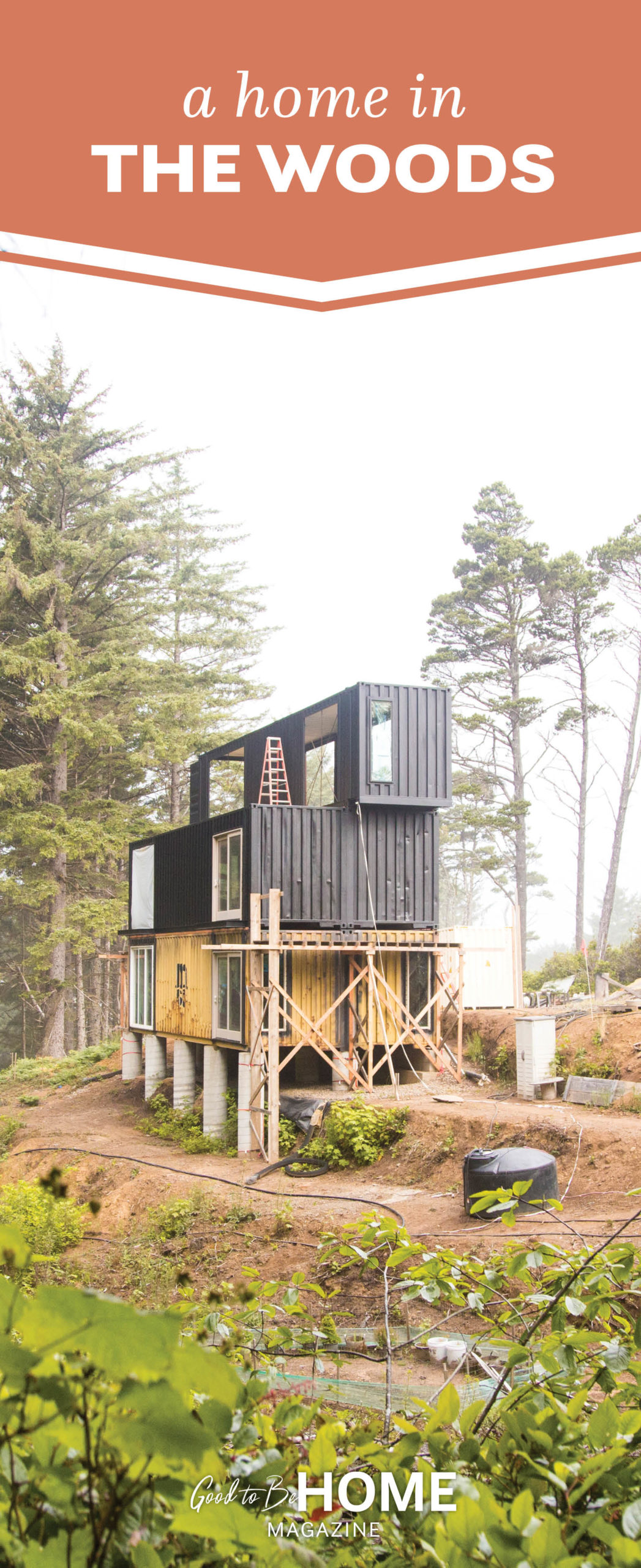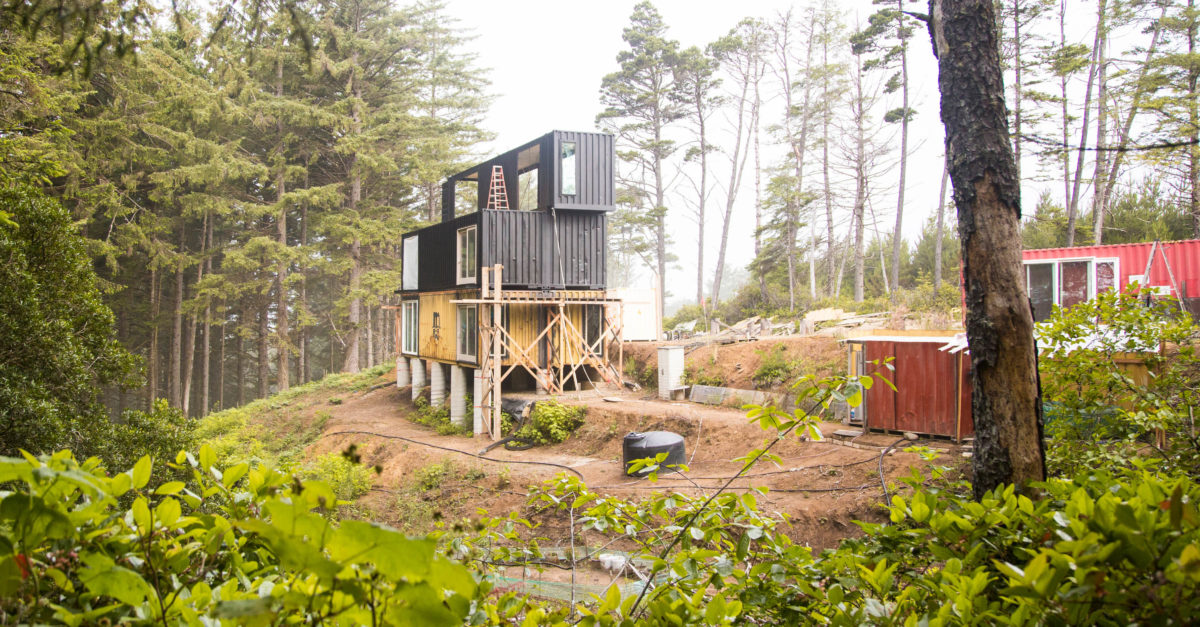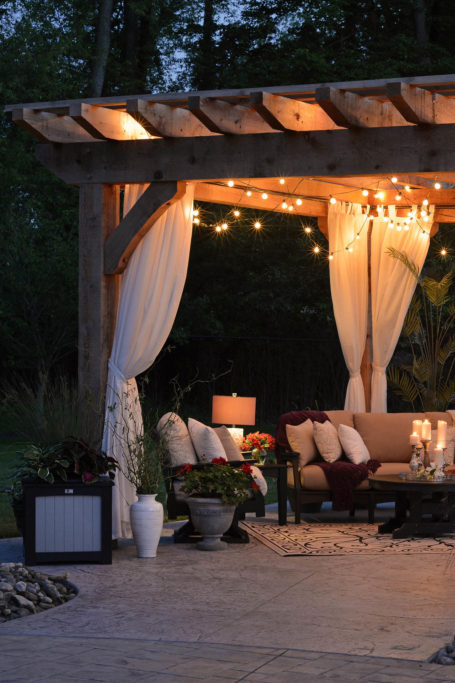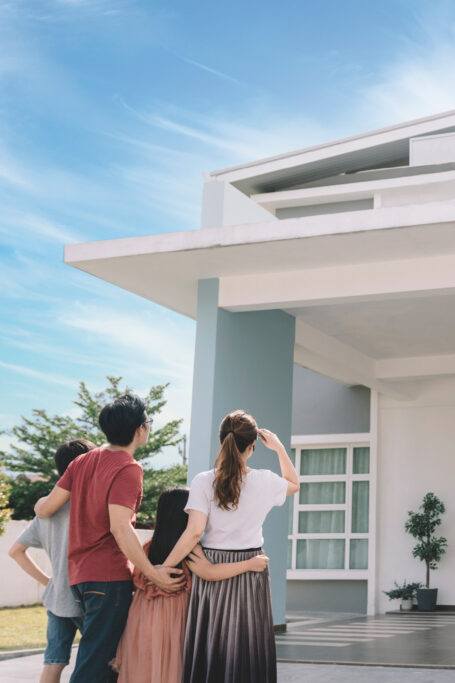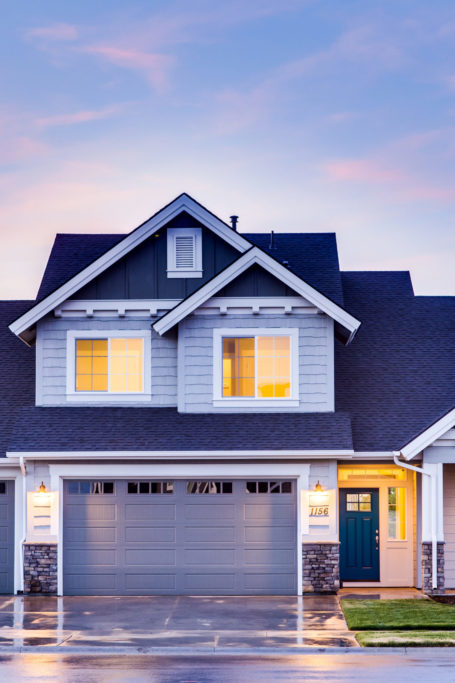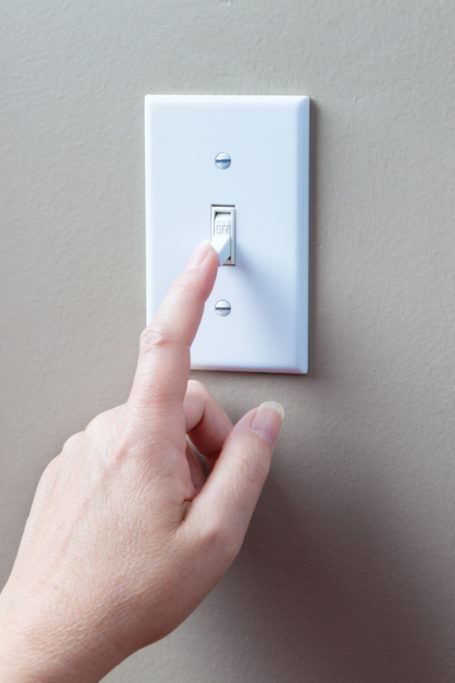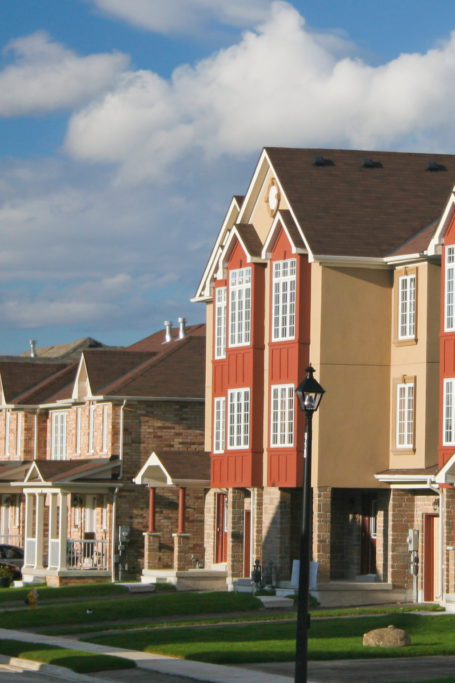A Home in the Woods
Making her childhood dream a reality, Jessica P. and her husband ditched their life in Las Vegas to build a home in a Pacific Northwest forest, an ongoing project they lovingly call Pacific Pines Ranch.

How did this project come to be?
It’s always been my dream to have a big property in the forest, so my husband and I decided on a radical life change: find a piece of land and build a house. While researching, we learned about shipping-container projects done overseas. We thought it was such a cool idea and figured, “Why not? You only live once.” We can work from anywhere because we’re both self-employed, so we left Las Vegas in a camper van, toured the country for about a year looking for a piece of land to call home, and found this place in Oregon.
Did you have any fabrication skills before you started?
None. I didn’t even know how to use a drill before we started. We learn everything as we go. That’s the power of the Internet.
So you’ve taught yourselves through the Internet?
Yes. If we need help on something specific, we’ll ask friends who know about fabrication and building, but, other than that, we’ve mostly researched online, gone through some trial and error, practiced, and used the skills we learned. Our family and friends think we’re crazy but in a good way. They’re shocked that we’re capable of doing something like this.
Was it difficult obtaining permits, considering that you’re building a nonconventional home?
No, it was actually easy. In Oregon, if you’re in a small town and the home is structurally sound, you can generally build in a nonconventional style. For example, there are a lot of cob houses in Oregon.
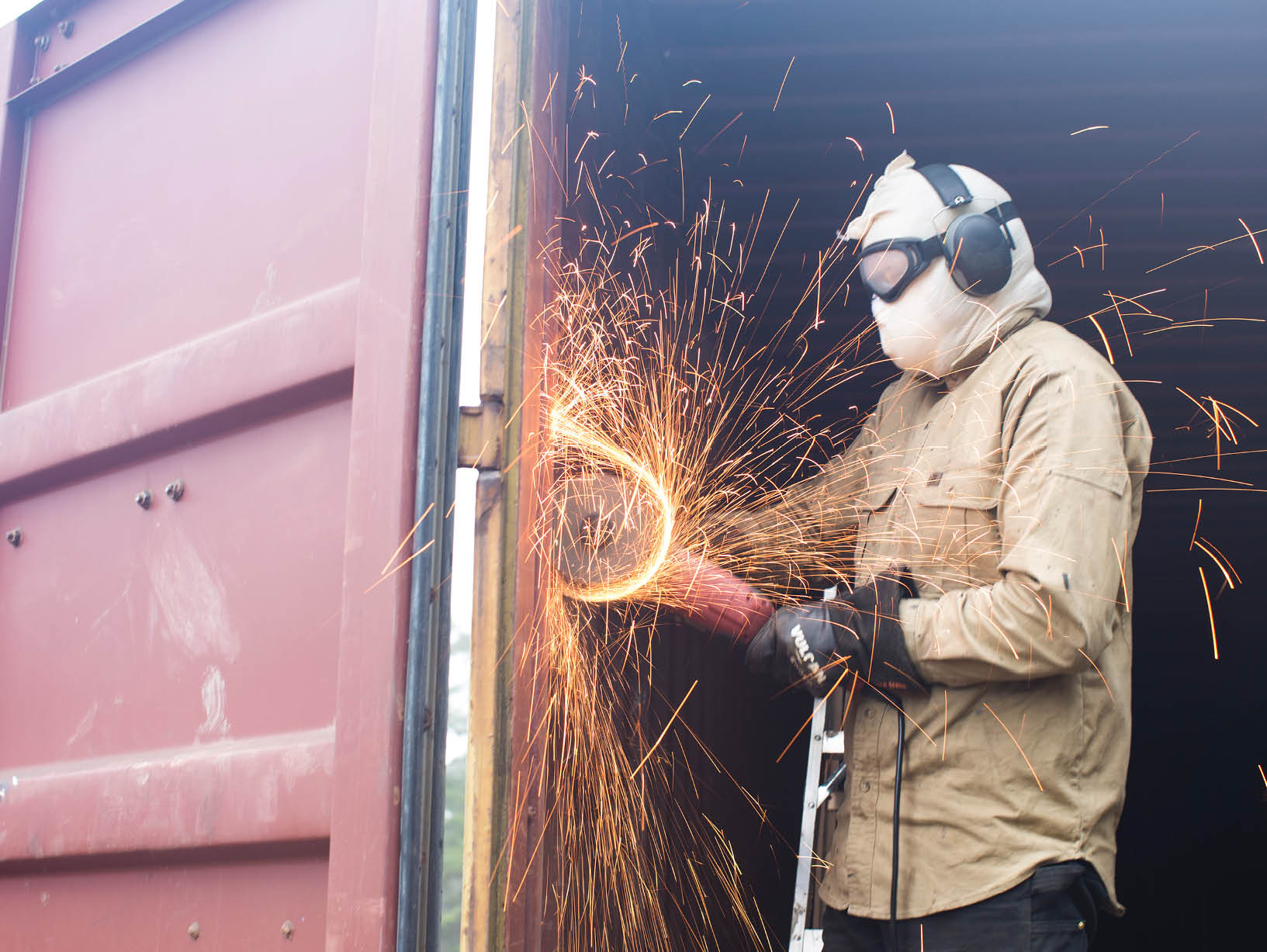
Where do you get your containers?
You can get them anywhere in the US, but the closer you are to a major port and a large city, or even a railway system, the easier it will be to have them shipped to your property. We got ours from Portland and had them delivered by truck to where we are.
What was the excavation process like?
The land was like a jungle. The plant life here is tenacious and strong, and the forest hadn’t been touched for hundreds of years; we have trees that are six to eight feet in diameter. So it was hard to figure out how to clear it out, make a building site, and create the road to the property. That was one of the few times when we had to hire somebody because we didn’t have the experience to do the excavation and there wasn’t any margin for error. That said, we’ve been able to use the excavated trees a lot in our build. We even bought a chainsaw mill to get the most use out of the wood.
Does the Pacific Northwest weather affect this project?
Our life revolves around the weather. We started working on the foundation in June 2018, but we’ve only actually built for about a year and a half because everything would come to a halt in winter; it’s so humid and rainy.
Did you always want to document this project, or did that happen organically?
That happened organically. I don’t know why I never thought of doing it. I recorded everything—all our travels and when we first got here—but I had only been taking pictures of the house and the build to show my family and friends. They encouraged me to make videos for people to see, and I took their advice.
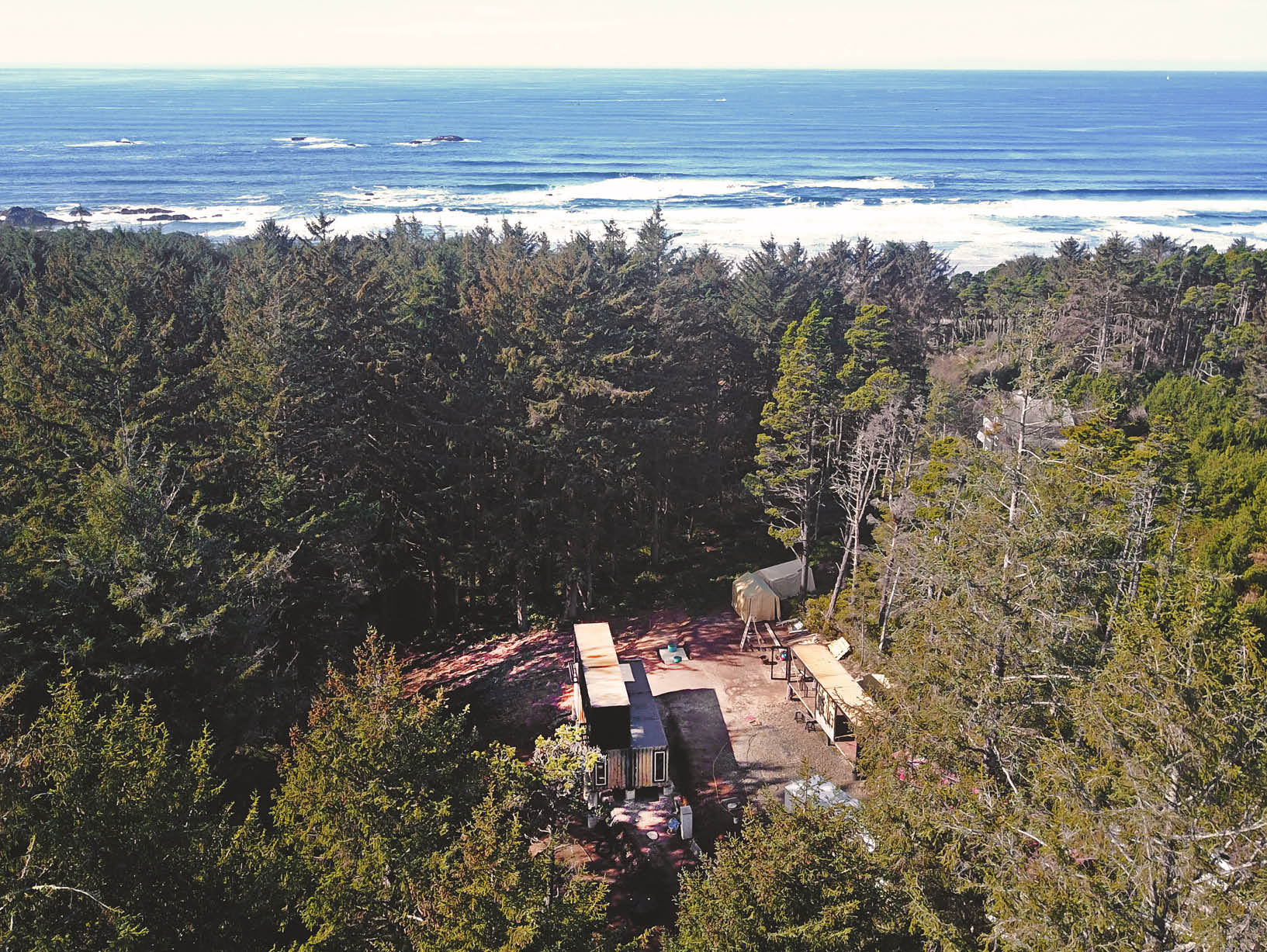
What are the advantages and disadvantages of using steel containers for a home?
The biggest pro is their strength. Also, they’re very much modular units: you can add to them. For example, on our second level, we added forty feet of glass doors and windows, which you probably couldn’t do with a standard home. A big con would be corrosion. If you don’t manage that, it can be a big problem, depending on where you live. Logistics, such as having everything transported, can also be tricky and make things take longer.
What are your most important tools?
Definitely the angle grinder and the welder. A third would probably be the airless sprayer because we paint so often. We don’t have a variety of tools, but we use them a lot. We make a good team because I will mainly do the welding and my husband will do the cutting and grinding. When we’re done, we’ll share the task of cleaning the steel. We try to keep the workload balanced so we don’t get burned out.
How many hours do you put in each day?
I would say, on average, a good twelve hours—and some days it’s much more. We also make sure we have days set aside to get chores done like laundry and dishes.
How big will Pacific Pines Ranch be when it’s done?
The house will be around 3,000 square feet on four acres of land.
What’s next?
Now that we have the containers up, we’ll seal them. Once all that is situated, we’ll focus on the interior and work on the framing, drywall, electricity, plumbing, and floors. After that, we’ll have appliances installed on the inside, and we will finally be able to enjoy using those after all this time. Having a dishwasher will totally change my life. [Laughs]
What have been the biggest challenges and greatest rewards of this project?
The biggest challenges are definitely mental because seeing all the things you have to do, while knowing the time it takes to do them, can break you down. The biggest rewards are discovering what you’re capable of doing with a little bit of ambition and hard work and seeing the project come together. It’s like doing a long-distance race.
Can you put into words what this project means to you?
It makes me proud to see how far we’ve come and happy that we’re able to build our dream house ourselves with our own hands and live our dream life out in the woods. It’s been a very life-changing, empowering experience, especially because there aren’t a lot of women in construction.
When this is all done, what do you look forward to doing in your new house?
I can’t wait to relax on the rooftop deck and enjoy the sunset. I also look forward to other simple things such as having a coffee or having friends over and spending time with them while taking in the beauty of the surrounding area. It’s already incredible to see the trees and wildlife from the second floor, and when the fog rolls through, I feel like I’m in a fairy tale.
For more info, visit @pacificpinesranch on YouTube or Instagram
